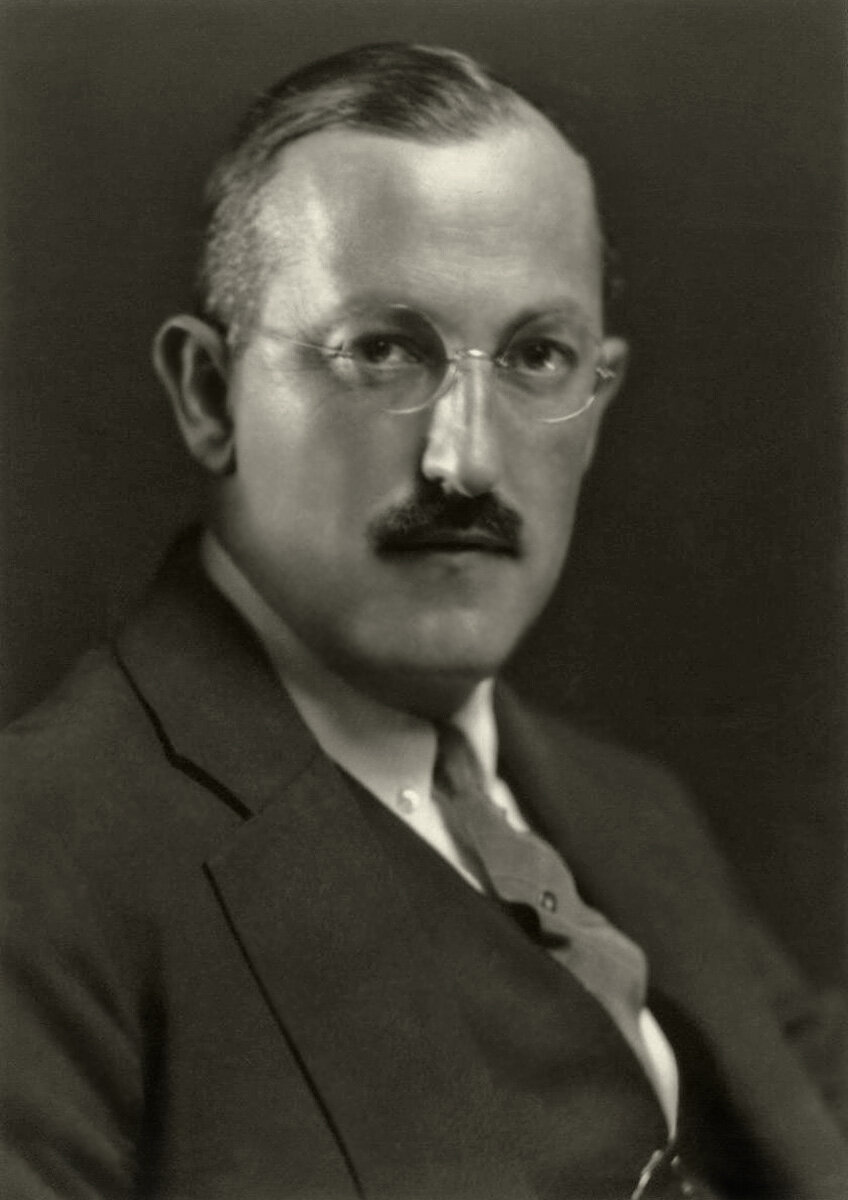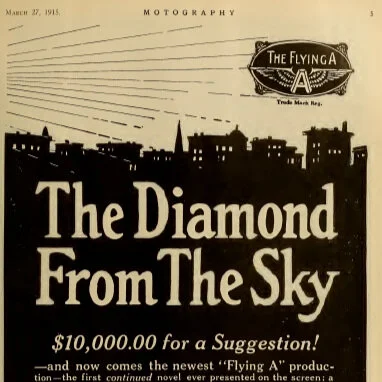Alfred Cheney Johnston's Nude Photograph Collection
Alfred Cheney Johnston, son of a New England banking family, in 1921. This would have been taken one year after Edith May’s photo shoot with him.
Every so often a chance discovery throws historians a glimpse behind the public facade of notable figures. After Ziegfeld photographer Alfred Cheney Johnston died in 1971, just such a chance discovery was made in the barn/studio on his rural property: boxes marked “Private” which were full of nude photographs of young women. These women/girls were all unnamed. Some of Johnston’s photographs may be classed as art, but some were simply nude mug-shots: the standers were posed in ways that clearly showed their faces and sexual organs.
A. C. Johnston photograph, circa 1920. Subject unnamed, probably an employee of Florenz Ziegfeld. Courtesy Wikimedia Commons.
I have not seen the entirety of this “Private” collection; it’s unclear to me what happened to it exactly or even if the photographs that comprised it have been identified and catalogued. Wikipedia contributors describe the photograph above as “classic” for Johnston; collector/historian Robert Hudovernik’s selection in Jazz Age Beauties focuses on portraits where faces are obscured— it’s unclear how representative of the 1971 “Private” selection these are. Hudovernik was able to identify the subject of his favorite picture by comparing it to contemporary trade journal photographs. What collectors and curators seem to agree on is that many of these unnamed subjects were Ziegfeld employees.
Alfred Cheney Johnston, along with his boss Florenz Ziegfeld, were judges for the National Salesgirl’s Beauty Contest, which Monroe, Wisconsin teen Edith May Leuenberger won in 1920. (Another judge, feminist/artist Neysa McMein, occupied the NYC studio next to Johnston’s.)
Edith May’s prize was to work as a chorus girl for Ziegfeld for 6-8 weeks, and be given a part in a movie (which was never made) through the Mayflower Photoplay Corporation. All indications are that at some time during her Ziegfeld career (duration three weeks), Edith May had a personal photo shoot with Johnston. Edith May chose not to continue her stage career; she had some sort of traumatic experience while working with Ziegfeld’s troupe.
There are many theories as to what this unknown-prior-to-1971 collection of Johnston photographs represents, one of the more fanciful is Hudovernik’s, who believes they are portraits of society women (all with the figures of showgirls!) who were so enchanted by Ziegfeld that they just had to be part of the glamor. Other more prosaic commentators believe the photos probably represent a private pornography stash enjoyed by Johnston, Ziegfeld or both.** In this post I will suggest that the collection is something quite different, my opinion is based on Ziegfeld’s business model. First, however, I need to provide some historical context for this collection.
Nude art was not taboo in New York society during the 1910s - 1930s when these photographs were taken— in fact, Johnston published a collection of his photographs of nude women in 1937. (Those from the barn stash did not appear in this published group.) After Ziegfeld’s mismanagement of the Follies and legal troubles scuppered his business, Johnston was out of work and the photographer could have used a few more such collections to pad his income— or at least to advertise his struggling photography business. However, pictures from the barn stash were never released in Johnston’s lifetime.
If Johnston was proud of the “private” collection of photographs, why were they never exhibited? Why were the subjects not documented? Why were they kept in conditions that risked damage by rodents or the elements? My answer to these questions is that after Ziegfeld died in 1932, the photographs became something of a liability for Johnston. Without the protection from Ziegfeld’s money and contacts, Johnston was sitting on a pile of blackmail material pertaining to valuable product which was now owned by cut-throat men in Hollywood. Johnston was probably scared to own it, yet just as scared to throw it away.
Ziegfeld’s early career as the operator of a chorus-girl business was hampered by a sleazy reputation. Ziegfeld wanted to change this, and invested heavily in the image of his girls— he wanted them to be considered fashionable and desirable like Lady Duff Gordon’s models, e.g. the stunning Mauresette. The stink of cheap prostitution had to go. Chorus girls who were interested in movie careers touted themselves as starlets from Ziegfeld’s Follies— contemporary trade press notes that Ziegfeld girls were all over the burgeoning “Star System” which was being promoted by Monroe native John Freuler in particular. Ziegfeld, whose brother was a movie producer, tried to turn the Follies into a starlet-mill for Hollywood.
Ziegfeld’s business model has one glaring problem: how does one control the product after one has invested in her career? How does one ensure a return on investment?
In 1949 Marilyn Monroe was out of work and desperate for money. She agreed to have a series of nude photographs taken by Tom Kelly for $50. Once she began to get work again, the inevitable happened:
“So, in 1952 when the media came across the nude photo, they quickly began speculating that it was Marilyn. With scandal brewing, Marilyn - who had recently signed a new seven-year contract with 20th Century - was urged by the company to deny that the photos were of her and told they would ruin her career.”
Readers should bear in mind that this was 1952, over thirty years after Ziegfeld set up his starlet-mill. The film business climate in the mid 1910s through 1920s, when most of Johnston’s 1971-discovered pictures were probably taken, was particularly touchy because powerful industry moguls like Freuler were concerned that public perception of film as a vehicle for pornography would limit their expansion opportunities and subject their businesses to government regulation. In the 1920s most movie producers would not risk marketing an actress with pornographic baggage— especially if they couldn’t control its exposure. Pictures of nude Ziegfeld girls were insurance policies taken out by Florenz early in the showgirls’ careers.
For Ziegfeld, with his powerful contacts in Lady Duff Gordon’s circle of friends/lovers/clients, such insurance policies were a manageable risk. But for Johnston, who was not a player on the level of Ziegfeld, the risks involved would have been considerably greater. I can sympathize with his desire to run to rural Connecticut, throw the pictures in a box and pretend they weren’t there.
It’s possible that prior to Ziegfeld’s death the collection represented something else too: it wasn’t uncommon for bordellos to keep photographic records of the girls on offer. Given the close connection between show business and prostitution, it would not be surprising if these photographs were used as advertising brochures for that ‘in crowd’ of notables who might pay handsomely for a night with one or more Ziegfeld girls, but I will examine this angle of the collection more later.
** Flo Ziegfeld’s sexuality may have been more complicated than is generally realized. He was the promoter of Eugene Sandow prior to his promotion of any famous women. ImmigrantEntrepreneurship.com, a website maintained by the German government, tells us the following:
Ziegfeld thus began as a sort of scout or talent agent for his father’s entertainment house. … His first big success was the discovery of German muscle man, Eugene Sandow in New York. Ziegfeld Jr. convinced Sandow to change managers and they created an immensely popular show to huge crowds of spectators awed by his strength.[23] In 1893, he put the statuesque German model, a native of East Prussia (born Friedrich Wilhelm Müller in Königsberg) on display for audiences, coaching him to strike classical Greek and Roman poses designed to imitate up-market entertainment. According to Sandow, the theater could hold six thousand spectators, and the house was sold out every night of his performance. He was of small stature with a muscular physique of massive proportions, which appealed to the ladies who would pay extra to admire him in his dressing chamber.[24]
The two having hit it off, “Ziegfeld and Sandow enjoyed the food, the beer, the pretty girls, and the endless evenings in an atmosphere utterly and completely German.”[25]
(Published 2014)
Needless to say, Berlin’s current Federal Foreign Office and its Ministry of Economics and Technology are very proud of Sandow and Ziegfeld’s relationship. Ziegfeld’s complexity is mirrored by another successful salesman of women’s bodies, Hugh Hefner, who was also alleged to have a more nuanced sexual life than the image of himself he marketed.








